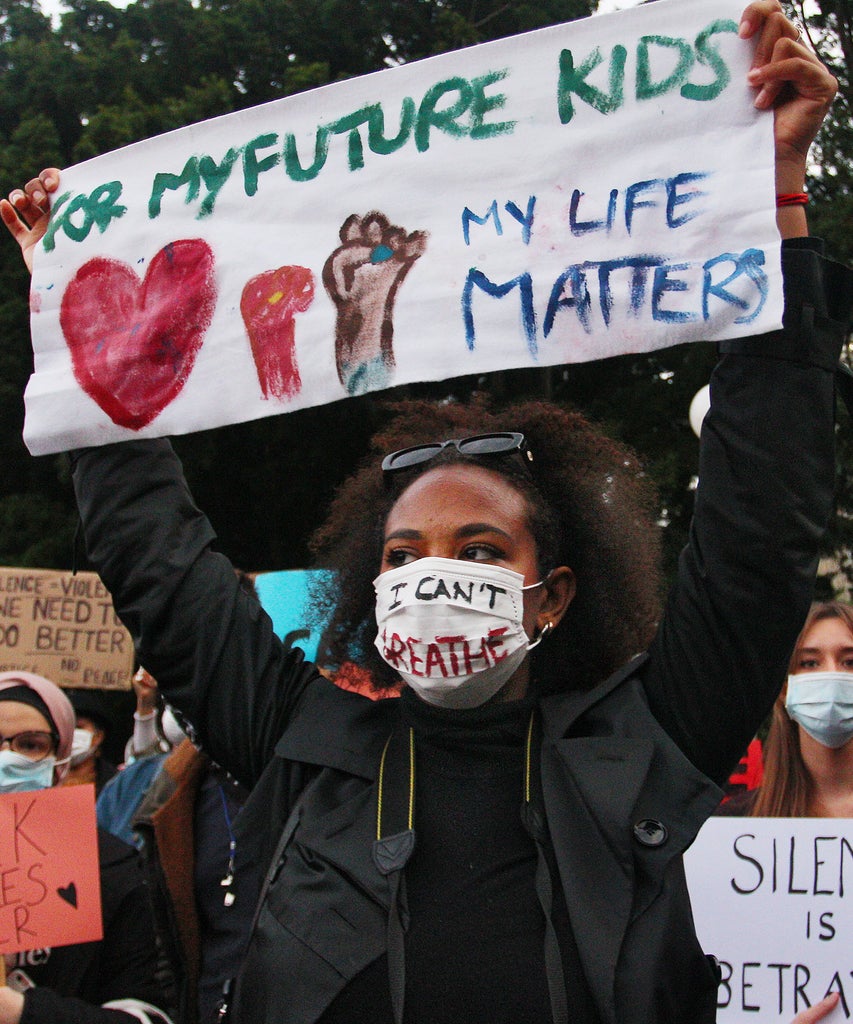
On Monday, President Trump gave an order to utilize tear gas and flash grenades outside of the White House against a group of individuals peacefully protesting systematic racism in America and spreading the Black Lives Matter movement. Tear gas was also used at protests that took place in Brooklyn. Tear gas is a dangerous chemical weapon that can cause eye pain, chest tightness, coughing, vomiting, and increased nasal secretions, among other painful and uncomfortable symptoms. First used in the trenches of WWI, tear gas was outlawed in war-time combat in 1993. However, law enforcement can still use it during times of civil unrest.
While Black Lives Matter protests have been happening since 2013, Trump’s violent, militaristic response — including his threat on Monday to reinstate the Insurrection Act, a law enacted in 1807 by Thomas Jefferson that gives the acting President the right to deploy the military inside of the U.S — has made the protests of the last few days erupt in more violence than those in the past.
On Tuesday evening, countless more protests are expected to take place across the country, and after witnessing the tactics used by the police thus far, it’s clear that anyone who plans to join needs to come prepared.
Following this weekend’s protests, Congresswoman Alexandria Ocasio-Cortez posted an infographic to her Instagram page outlining what people should and shouldn’t wear and bring while protesting. While some tips might sound obvious, others aren’t quite so clear cut. And since this week’s protests have been known to escalate, it’s important to be prepared for anything, including tear gas, rubber bullets, flash bombs, and more. Moreover, being arrested while protesting is not unlikely, which means it’s important to bring your ID, one to two days worth of your daily medication, and emergency numbers.
Ahead is our all-encompassing guide to dressing and preparing for a protest.
What To Wear
Per AOC’s post, when protesting, you should wear nondescript clothing in solid colors, preferably in layers, too, in case one layer is exposed to chemicals. Other resources suggest packing a fresh pair of clothes and storing it in a plastic bag for similar purposes. According to Popular Science, when it comes to clothing, the less skin showing and the denser the fabric, the better equipped you are if the police end up utilizing tear gas during a protest. Given that tear gas adheres to moisture on the skin, the more covered you are with fabric, the less surface area there is for the gas to stick to, so wear long pants and long-sleeves if you can.
According to Amnesty International, protesters should also wear comfortable shoes that will both protect your feet from chemical exposure and are easy to run in, if necessary, as well as shatter-proof eye protection like sunglasses, swim goggles, or gas masks. In addition, wear a hat that will provide protection from both the sun and chemical weapons.
If you’re bringing a bag, the best option is one that’s see-through — similar to one you would bring to a sporting event — and worn on your back like a backpack or a drawstring bag. It should be comfortable to carry and lightweight.
Due to the still-very-dangerous threat of COVID-19, protesters should also wear a protective face mask and gloves at all times during protests. Amnesty International says a bandana is best for covering your mouth and nose while protesting, while also noting that it’s important to soak the material in water, lemon juice, or vinegar beforehand in order to aid in breathing during possible chemical exposure. Said bandanas should remain damp during protests.
Cover up any visible, identifying tattoos with clothing; write down your emergency contacts somewhere on your person; and tie your hair up.
What Not To Wear
Just as important as what you should wear and bring is what you shouldn’t. According to AOC’s post, that includes jewelry, anything that you wouldn’t want to be arrested with including drugs or weapons, and contact lenses, as chemicals can get trapped underneath them. As for your cell phone, you might want to leave it at home, unless you’re going to first turn off Face/Touch ID, go on airplane mode, and disable your data.
Amnesty International suggests avoiding wearing anything that’s loose and could easily be grabbed.
Other Items To Bring
Hydration is key, especially if you plan to be protesting for a long period of time and in direct sunlight. Bring extra water with you, preferably in a squirt bottle. Also, pack healthy and energizing food like an energy bar or fruit.
Other items to pack according to Amnesty International are a wristwatch, one to two days worth of prescription medications, extra cash, hand sanitizer, and menstrual pads for women — if you’re arrested, you might not be allowed to or be given the chance to change your tampon.
Lastly, again, don’t forget a form of ID and emergency contact information.
To help bring attention to the police killing of George Floyd, you can sign the Change.org petition here, or donate to local organizations like Black Vision Collective or Reclaim the Block via the Minnesota Freedom Fund here.
Like what you see? How about some more R29 goodness, right here?
What To Do If You Get Arrested While Protesting
19 Black-Owned Fashion Businesses To Support Now
Brands Lay Out Plans To Help The Black Community
from Refinery29 https://ift.tt/2MoW0rq
via IFTTT

